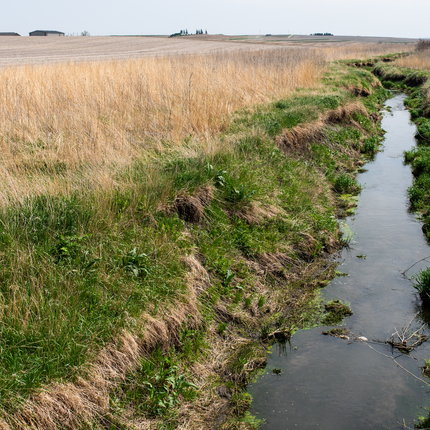Teresa Hoffman, senior communications associate, [email protected], 402.687.2100 ext. 1012
NEVADA, IOWA – Results of surveys conducted by the Center for Rural Affairs show Iowa’s Watershed Management Authorities (WMA) are making an impact as community leaders look to advance goals related to flood resiliency and water quality. Yet, the groups face an uncertain future.
WMAs are collaborative entities of local leaders representing more than 300 Iowa cities, counties, and soil and water conservation districts. Results of the survey indicate that, to date, the 27 WMAs across the state have implemented more than 2,600 conservation practices, such as wetlands, edge-of-field practices, and flood control projects.
“Through this survey, we are able to better understand what the WMAs have accomplished and capture a snapshot of their current circumstances going into 2023,” said Kate Hansen, senior policy associate for the Center and author of the newly-released report “From the Source: A Look at Iowa’s Watershed Management Authorities.”
Findings are based on two surveys conducted by the Center and collaborators in 2022 and early 2023 and are supplemented by historical data and other information.
According to the survey:
- More than $50 million in federal funding has been invested in Iowa by the WMAs.
- More than $21 million has been invested by local communities toward WMA efforts.
- WMAs report a demonstrated need from farmers and landowners to install additional conservation practices.
- Last year, seven WMAs lost significant staff capacity. Two more are at risk to follow suit in 2023.
- The number of WMAs with full-time watershed coordinators has shrunk from 13 to 7.
- The most successful WMAs are those with a staff person, specifically a watershed coordinator, who manages projects and builds local relationships with farmers and landowners. Due to a number of factors, including sunsetting grant funding, many WMAs have lost or are at risk of losing this important staff.
WMA leaders are clear about what would most significantly support their continued success. More than 70% of respondents indicated stable coordinator funding was the one change that could best support their efforts.
“The surveys revealed the significant impact WMAs are having across the state, in stark contrast with the uncertain position they find themselves in,” Hansen said. “This presents a timely opportunity for state lawmakers and decision makers to support these important entities.”
To read and download “From the Source: A Look at Iowa’s Watershed Management Authorities,” visit cfra.org/publications.





